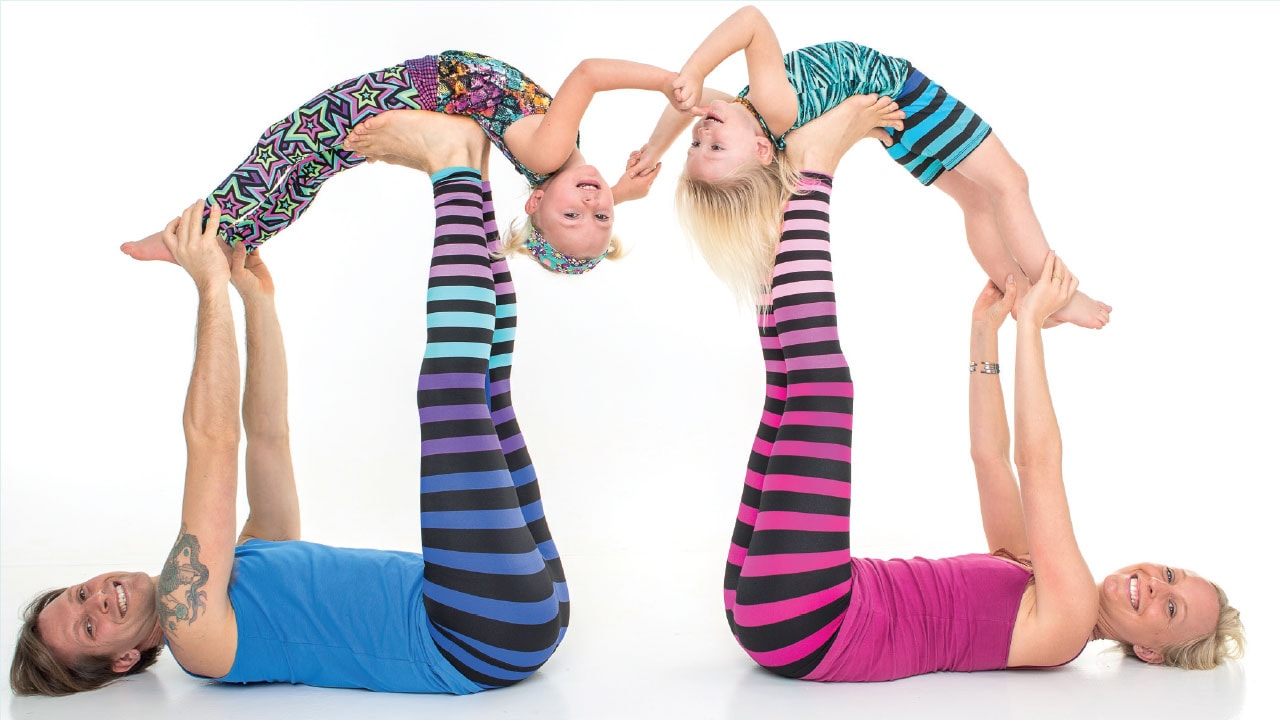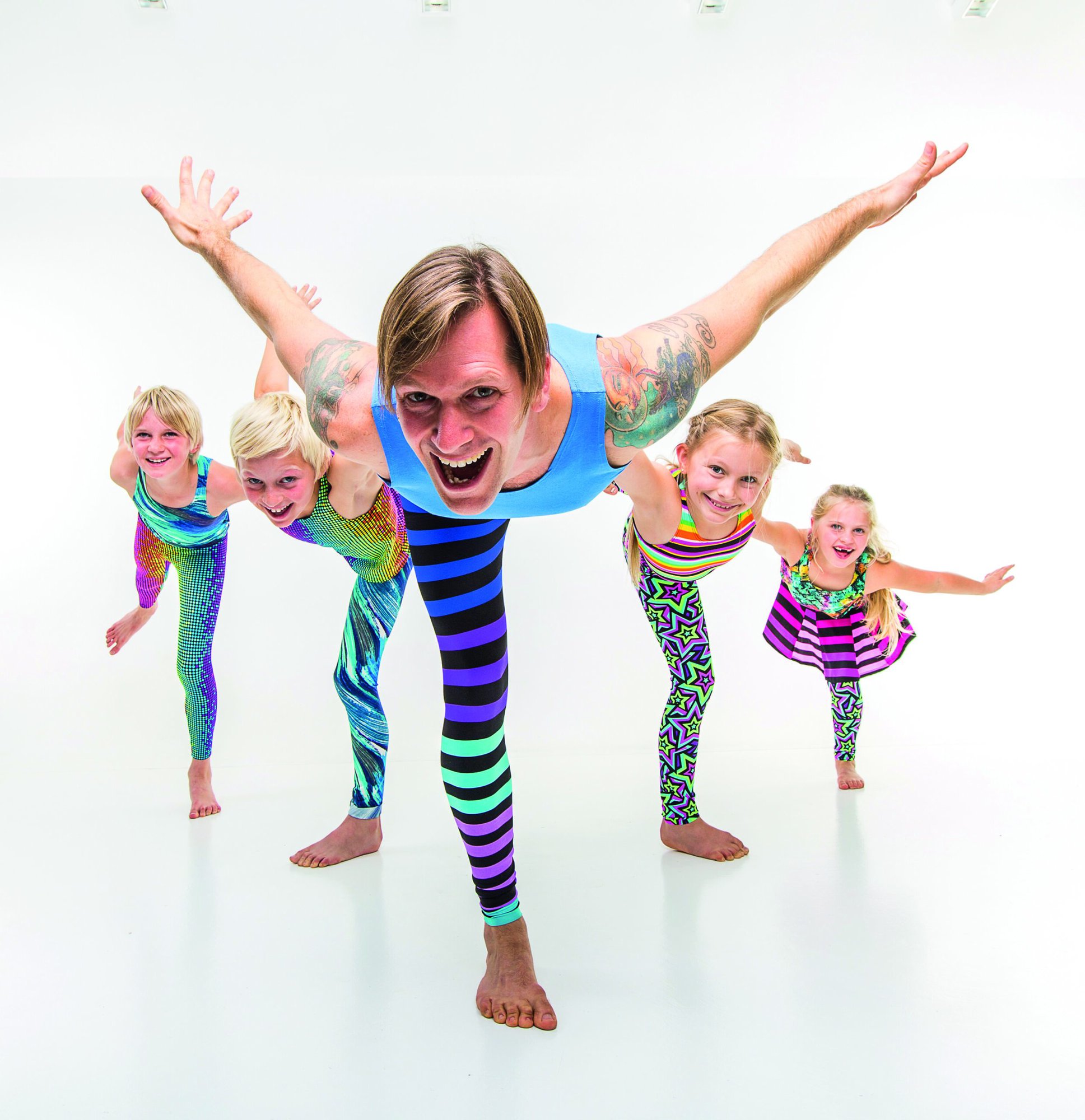
Yoga for children
You are never too young to do yoga: why introducing children to yoga at an early age can be such a powerful gift. By Gopala Amir Yaffa
Gymnastics, swimming, dance, martial arts, basketball, soccer…there are many choices available to parents for physical, movement-based extracurricular classes for their children. What makes yoga different? Yoga is a fun way for children to develop important skills in a nurturing, non-competitive environment. From a young age, children begin to experience pressure to perform academically and socially. Add to this the pressure of competitive, organised sports and it’s easy for youngsters to become overly self-critical or lose confidence.
Yoga can be a great remedy for the tension associated with these daily stressors as well as an important facilitator of healthy physical, emotional and cognitive development. There is increasing evidence to support the vast benefits of yoga practice for children. One study published by the University of California (2003), found that children who had frequent yoga instruction showed significant increases in self-esteem, as well as overall fitness and academic performance, and a decrease in discipline problems. Additionally, students reported feeling more relaxed and were more aware and respectful of their peers.
At Rainbow Kids Yoga we strive to maintain a balance between spontaneity and structure so children participating in classes learn to listen to themselves and each other while being able to express themselves creatively. The incorporation of stories, songs, games and poses creates a multi-sensory environment, where children develop through kinesthetic, visual, and auditorial learning.
Children are encouraged to respect and pay attention to their bodies, making sure each pose feels good, and coming in and out of positions when they feel ready (something most adults have a hard time doing!). As children grow and their bodies change, this becomes an important skill. Having the ability to listen carefully to the body and heart is not just a means to avoid injury, but also makes it easier to be self-reflective and make good choices when dealing with peer pressure.
So, what makes kids yoga classes different from other movement-based activities incorporating music and games? There are four key areas that set yoga apart:
1. There is no other form of exercise that offers such a wide range of movements.
While practicing children’s yoga, we bend forward and back, we twist and side bend, strengthen and stretch, balance and even spend some time upside down.
Besides the obvious benefits of yoga in helping us be stronger and more flexible, yoga for children also helps in developing coordination, balance, and many other important motor skills. It can even make us a bit taller by improving our posture and stretching and lubricating our muscles and joints! Bringing awareness to our body also helps to foster a healthy love and appreciation of the miracle of our being and a fascination with the body’s capabilities. Great for boosting self-love and self-esteem.

2. Yoga for children not only exercises our body, but it also exercises the mind and strengthens the breath.
Before, after and while in poses, children are encouraged to regulate and deepen their breath through focused attention. Having more oxygen in our body enhances our mood and our ability to focus and increases our capacity to relax both our body and our mind.
3. Children’s yoga has one important benefit which is generally not part of adult yoga: it involves interaction.
In the class, children are not isolated to their own yoga mats; partner and group poses, cooperative games, self-expression and creativity are the norms in a children’s yoga class. Developing social skills is a critical component of self-development and is central to thriving as a human, big or small. Through yoga, children learn valuable verbal and non-verbal communication skills and become increasingly aware of the interconnectedness and interdependence of all beings; great for building emotional wellbeing and social skills.
4. Children’s yoga fosters not only an awareness of ourselves and our friends but creates a broader awareness of the world around us.
A central tenet of yoga practice is respect and honour for ourselves, for each other, and for our environment. During class, children are often guided on a magical journey around the world, learning about other countries and cultures. Additionally, through the incorporation of the many poses based on the movement of animals, they learn about different animal habitats, endangered species, and even about global issues such as the environment and world peace! Stretching and balancing through imitating nature is the most natural and intrinsic way for children to explore their bodies and their world around them.

Teaching yoga to children
Yoga can be adapted as a mode of teaching and learning just about anything. What better way is there to explore a subject than to move through it using creative yoga poses that are so good for you? History, geography, science, literature, and languages can all be learnt in this supportive and encouraging environment.
In this way, yoga is a holistic practice, with an inner, as well as an outer, focus. But most importantly for children…yoga is fun! But yoga for children cannot be taught in the same way as yoga for adults. You’ll need to start from where they are developmentally and deliver the yoga programme in a way that can be easily accepted and understood by them. This process begins with you doing everything you can to make the children excited about practicing yoga.
Both teachers and parents need to adjust their expectations when introducing yoga to children. If you expect them to do the poses perfectly from the beginning, or even to do all of the poses all the time, you will be greatly disappointed! Exploring different and creative ways to do a pose is part of the learning process. Creating a space that allows children to be creative, invent new things, dive into their imagination, play and even be a bit wild is more important for a child’s development than meditating.
It might be less comfortable for some adults to allow this into a classroom but letting go of our instinct to control the children’s behaviour and of the expectation of them to do exactly what we say all the time, allows them the freedom they need to discover who they are. If you wish to have a supportive and fun environment for children to explore the ancient art of yoga, you’ll do better if you let the children co-create the class with you. Give them choices, follow their lead for a bit and they’ll let you be the leader too.
We spend most of our childhood and youth learning, but there are many important life lessons we miss out on at school. Education must extend beyond the walls of the classroom. The mainstream education system rarely provides us with the tools which help us to be happier, healthier individuals; we don’t learn how to release tension or how to focus. While schools have a tremendous focus on learning outcomes, they fail to teach our children how to actually study effectively.
Yoga is much more than yoga poses; it is a way to discover our bodies and more broadly, our inner world. As human beings, we experience the universe through our minds and our hearts, so being able to consciously relax, uplift and focus ourselves are all vital abilities. It is never too early (or too late) to embark on this journey of self-discovery!
Gopala Amir Yaffa is the founder of Rainbow Kids Yoga Teacher Training (rainbowyogatraining.com)
10 BENEFITS OF CHILDREN’S YOGA
♥ Improves strength and flexibility.
♥ Increases self-confidence and builds a positive self-image.
♥ Increases emotional resilience.
♥ Nourishes creativity
♥ Teaches self-acceptance and self-love.
♥ Increases sensory awareness and general body awareness.
♥ Builds coordination and balance.
♥ Develops self-discipline and self-control.
♥ Builds concentration.
♥ Yoga is fun!




